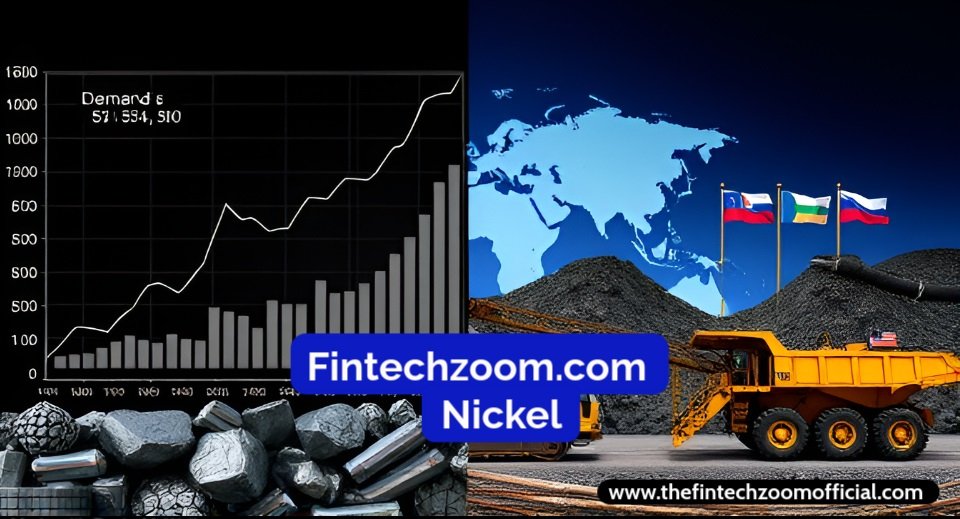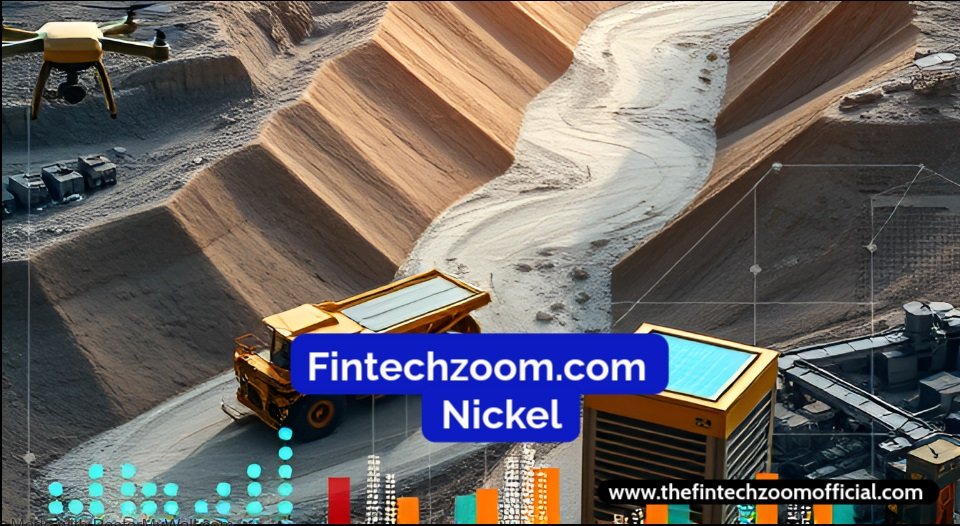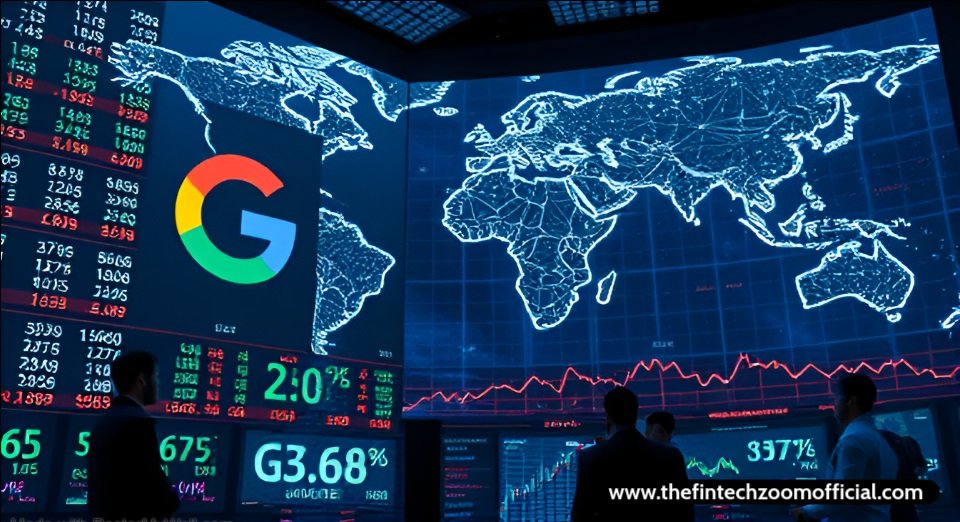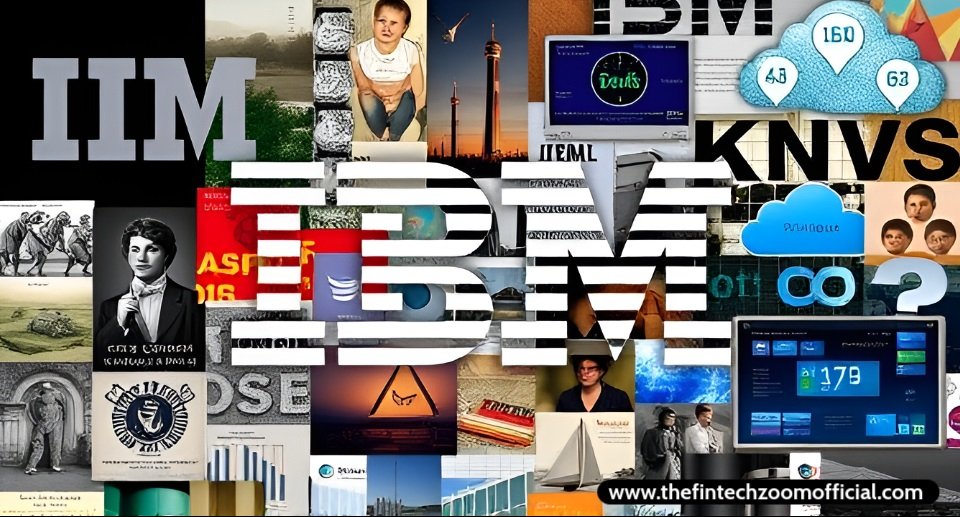The Fintechzoom.com Nickel Price Analysis highlights the significance of nickel as both a commodity and an investment opportunity. With multiple applications in stainless steel production and electric vehicle batteries, nickel plays a pivotal role in various industries.
Recent price trends indicate volatility, influenced by supply and demand dynamics as well as geopolitical factors. Technological advancements are transforming the nickel mining sector, enhancing efficiency while promoting sustainable practices.
Innovations such as automation and data analytics are helping companies optimize operations and reduce costs. Furthermore, the growing emphasis on environmentally friendly mining reflects an increased demand for ethical sourcing, making sustainability crucial in this space.
Looking ahead, the future of nickel appears promising, particularly in light of its critical role in renewable energy and electric vehicle production. Emerging markets in Asia and Africa are expected to drive demand as they modernize their infrastructures. Overall, while investing in nickel presents certain risks, staying informed about market trends is vital for making educated investment decisions.
In this blog post, we will analyze the Fintechzoom.com Nickel Price Analysis: Is It a Good Investment? This analysis provides a thorough understanding of nickel as an investment, focusing on market trends, price fluctuations, and future outlooks. Nickel is a critical commodity with extensive applications across various industries, including stainless steel production and battery manufacturing.
The current trends in nickel prices indicate significant fluctuations influenced by numerous factors. The purpose of this analysis is to equip potential investors with the knowledge needed to make informed decisions regarding nickel investments.
Points to be included in the introduction:
- Brief overview of nickel as a commodity.
- Importance of nickel in various industries.
- Current trends in nickel prices.
- Purpose of the analysis related to investment potential.
Key Points
- Overview of nickel’s role in the economy and industries.
- Recent price trends and market analysis.
- Factors influencing fintechzoom.com nickel prices (supply, demand, geopolitical factors).
- Expert opinions on nickel as an investment.
- Future outlook for nickel prices.

Main Content
Understanding Nickel as a Commodity
Nickel is a silvery-white metal that is highly valued for its strength, resistance to corrosion, and ability to withstand high temperatures. It is primarily used in the production of stainless steel, which accounts for approximately 70% of global nickel consumption. Additionally, nickel is a key component in batteries, particularly in electric vehicles (EVs), making it increasingly relevant in the context of the global shift towards renewable energy.
Properties and Uses of Nickel
Nickel possesses several physical and chemical properties that make it suitable for various applications. It has a high melting point of about 1455 °C and excellent ductility, allowing it to be shaped into different forms without breaking.
Applications of Nickel:
- Stainless Steel Production: Nickel enhances the strength and corrosion resistance of steel, making it essential for construction, automotive, and kitchenware industries.
- Batteries: Nickel is crucial in the production of nickel-cadmium (NiCd) and nickel-metal hydride (NiMH) batteries, as well as lithium-ion batteries used in electric vehicles.
- Alloys: Nickel is used in various alloys, including those used in aerospace and marine applications, due to its ability to withstand extreme conditions.
Current Market Trends for Nickel
The fintechzoom.com nickel market has experienced significant fluctuations in recent years, influenced by various economic and geopolitical factors. Understanding these trends is critical for assessing the investment potential of nickel.
Historical Price Trends
Over the past decade, fintechzoom.com nickel prices have seen considerable volatility. The following table summarizes the average annual nickel prices from 2015 to 2024:
Table
| Year | Average Nickel Price (USD per ton) |
| 2015 | 11,000 |
| 2016 | 9,000 |
| 2017 | 10,000 |
| 2018 | 13,000 |
| 2019 | 14,000 |
| 2020 | 13,500 |
| 2021 | 18,000 |
| 2022 | 25,000 |
| 2023 | 22,000 |
| 2024 | 20,000 (Projected) |
This table illustrates the upward trend in nickel prices, particularly in 2021 and 2022, driven by increased demand for electric vehicle batteries and stainless steel.
Also Read Our Article: Fintechzoom.com Gold: Latest Price Trends and Market Analysis

Factors Influencing Nickel Prices
Several key factors influence nickel prices, including supply and demand dynamics, geopolitical influences, and economic indicators.
Supply and Demand Dynamics
Global nickel supply is concentrated in a few countries, with Indonesia, the Philippines, and Russia being the largest producers. The demand for nickel is primarily driven by the stainless steel industry and the growing electric vehicle market.
Supply and Demand Table:
Table
| Country | Nickel Production (2023, tons) |
| Indonesia | 1,000,000 |
| Philippines | 250,000 |
| Russia | 200,000 |
| Canada | 150,000 |
| Australia | 100,000 |
Also Read: FintechZoom.com: Asian Markets Todays Updates
The table above shows the distribution of nickel production among the leading producing countries. Any disruption in production due to environmental regulations or geopolitical tensions can significantly impact prices.
Geopolitical Influences
Geopolitical tensions can create uncertainty in the nickel market. For instance, trade policies and mining regulations in major producing countries can affect supply chains.
- Example: Indonesia’s ban on nickel ore exports in 2020 aimed to boost domestic processing has led to increased prices globally due to reduced supply.
Economic Indicators
Economic indicators, such as GDP growth rates and industrial production levels, play a vital role in determining nickel demand. When economies grow, especially in emerging markets, the demand for infrastructure and construction materials, including stainless steel, increases significantly.
Key economic indicators influencing nickel prices include:
- Manufacturing Output: Increased manufacturing activity usually correlates with higher nickel demand for stainless steel and other alloys.
- Electric Vehicle Sales: The accelerating adoption of electric vehicles drives demand for nickel as it is a crucial component in battery production.
Read This Article: Fintechzoom Netflix Stock: Key Trends and Forecasts
Nickel Price Forecasts
Understanding the projections for fintechzoom.com nickel prices is essential for investment decision-making. Various analysts and financial institutions provide insights based on current market conditions, technological advancements, and broader economic trends.
Analyst Predictions
Financial analysts predict that nickel prices will remain volatile but are likely to trend upwards in the coming years, driven by the growing demand from the electric vehicle sector. A report from a leading investment firm states that nickel prices may reach $30,000 per ton by 2025 if current trends continue, primarily due to the increasing need for batteries.
Also Read This Article: Morgan Stanley Energy Mutual Fund: Fintechzoom Investment Guide
Market Sentiment
Market sentiment towards nickel investments reflects a growing optimism, particularly in light of the global shift to renewable energy. Investors are showing increased interest in nickel-focused investment products, including stocks and exchange-traded funds (ETFs). The projected increase in nickel demand for sustainable technologies, such as renewable energy storage systems, reinforces this positive sentiment.
Investment Strategies for Nickel
Investing in fintechzoom.com nickel can be approached through various strategies. Each method has its benefits and risks that investors should consider carefully.
Direct Investment in Nickel
Investing directly in physical nickel can be an option for those looking to hold the commodity. This approach has the following pros and cons:
Pros:
- Tangible asset that can serve as a hedge against inflation.
- Potential for profit if prices rise.
Cons:
- Requires storage and security measures.
- Market liquidity can be limited.
Nickel Stocks and ETFs
Investors may choose to invest in companies engaged in nickel production or related industries. Another strategy is to invest in nickel exchange-traded funds (ETFs) that track the performance of nickel or nickel mining stocks.
Benefits of Nickel Stocks and ETFs:
- Diversification across multiple companies reduces risk.
- Easier to trade than physical nickel.
Example Table: Top Nickel Mining Stocks
Table
| Company Name | Stock Ticker | Market Capitalization (USD) | Price (USD) |
| Norilsk Nickel | NILSY | 45 billion | 32.50 |
| Vale S.A. | VALE | 59 billion | 14.40 |
| BHP Group | BHP | 225 billion | 56.30 |
| Glencore | GLNCY | 60 billion | 10.90 |
| First Quantum Minerals | FQVLF | 22 billion | 26.40 |
Investors should perform due diligence on these companies, considering their operational efficiency, profit margins, and market positions.
Risks and Challenges in Nickel Investment
Like any investment, nickel carries its own set of risks and challenges that potential investors must understand.
Market Volatility
Nickel prices are known for their volatility due to fluctuating demand, trade tensions, and supply chain disruptions. This volatility can lead to rapid gains, but also steep losses. Investors need to be prepared for the potential of significant price swings.
Regulatory Risks
Changes in regulations in producing countries can heavily impact nickel supply and, consequently, prices. Policies related to environmental protections, mining rights, and export restrictions can change, affecting market stability.

The Role of Technology in Nickel Mining
Technological advancements are playing a pivotal role in the nickel mining sector. Innovations enhance operational efficiencies and promote sustainable practices.
Innovations in Mining Techniques
Modern mining techniques utilize data-driven algorithms and advanced equipment to increase nickel extraction efficiency. Companies are investing in automation and data analytics to optimize their operations and reduce costs.
Sustainable Mining Practices
Sustainability is becoming increasingly critical in nickel production. Many mining companies are adopting environmentally friendly practices, such as recycling and reducing carbon emissions, to comply with regulatory requirements and meet consumer demand for ethical sourcing.
The Future of Nickel in the Global Economy
Looking ahead, the demand for nickel is expected to rise, particularly in the context of global shifts towards renewable energy and electric vehicles.
Nickel’s Role in Renewable Energy
Nickel is set to play a crucial role in renewable energy storage solutions. As governments and companies invest more in renewable technologies, the demand for nickel in battery production is likely to grow. Notably, EV manufacturers highlight reliance on nickel as essential for expanding their electric battery range and performance.
Emerging Markets for Nickel
Emerging markets, particularly in Asia and Africa, are expected to become increasingly significant users of nickel. As economies modernize and urbanize, demand for electrical infrastructure and energy storage technologies will rise. This trend suggests bullish prospects for nickel investments as these markets expand.
Conclusion
The fintechzoom.com nickel price analysis reveals that nickel remains a promising investment option, particularly due to its critical role in renewable energy and electric vehicle production. While challenges such as market volatility and regulatory risks exist, the potential for substantial returns makes it appealing. Investors should stay informed about market trends and expert analyses to enhance decision-making regarding nickel investments.
Frequently Asked Questions (FAQs)
What drives the price of nickel?
The price of fintechzoom.com nickel is primarily driven by supply and demand dynamics, geopolitical factors, and economic indicators. Changes in production levels, consumption patterns, and global economic conditions can significantly impact prices.
Is investing in nickel a good idea?
Investing in fintechzoom.com nickel can be a prudent choice, especially given its increasing significance in sectors such as renewable energy and electric vehicles. However, potential investors should be mindful of the associated risks and market volatility.
How can I invest in nickel?
Investors can pursue various strategies, including purchasing physical nickel, investing in stocks of nickel mining companies, or buying nickel-focused exchange-traded funds (ETFs). Each option presents distinct risk profiles and strategies.
For external references: World Nickel Research, International Nickel Study Group and U.S. Geological Survey – Nickel Information







Leave a Reply